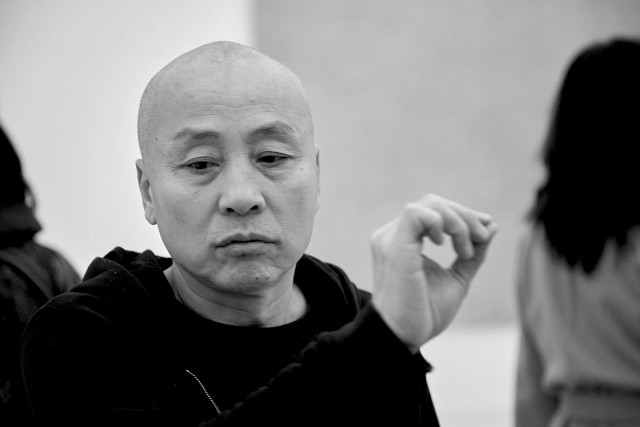Chen Kun (b.1961), was born in Yaan, Sichuan province and now lives and works in Beijing. He graduated from the Sichuan Art Academy in 1987, participated the “ Neo-concrete” southwest group exhibition in 1986. Over the next decade or so years he had been engaged in TV station art design, animation drawing, graphic designing and advertising. Chen Kun has participate in exhibitions in Beijing and London since 2005.
Born in the 1960s, Chen Kun set himself as the prototype in his earlier paintings, articulating the innermost confusions and anxieties in life. Intermittently from 2000, his artistic practice has witnessed a few profound changes where the non-representational images have been weakening progressively. The artist has dedicated more to the internality and been attracted to the lines themselves, which allow him to immerse himself in the internalization of spirituality. As the lines are repeatedly overlaid one by one and the number of lines rises, they appear to be more consummate and comprehensive. In spite of the “abstract” presence, the perceptibility of spirituality in the paintings readily resonates with the originalities of Chinese culture. As the artist figured out, he is able to engage in a more thorough-going, tranquil conversation with himself in such a massive, extensive cultural context.
In recent years, Chen Kun replaced pencils and oil brushes with writing brushes, by incorporating and disintegrating writing brushes and canvas, the artist has delivered a kind of visually exuberant and responsive message. Through balancing micro and macro, what can be discerned is the magnificently elevated landscapes and the modest simplicity literati prominence. Comparing with Wassily Kandinsky’s abstraction recognized as “hot” or Piet Mondrian’s abstraction as “cold”, Chen Kun’s works are more reserved and less intense. Such an unspeakable, intangible profundity and nihility, however, indicates a sense of Taoist philosophy as depicted in the line “He (whose rule is outside himself) has his will set on the extensive acquisition.”
